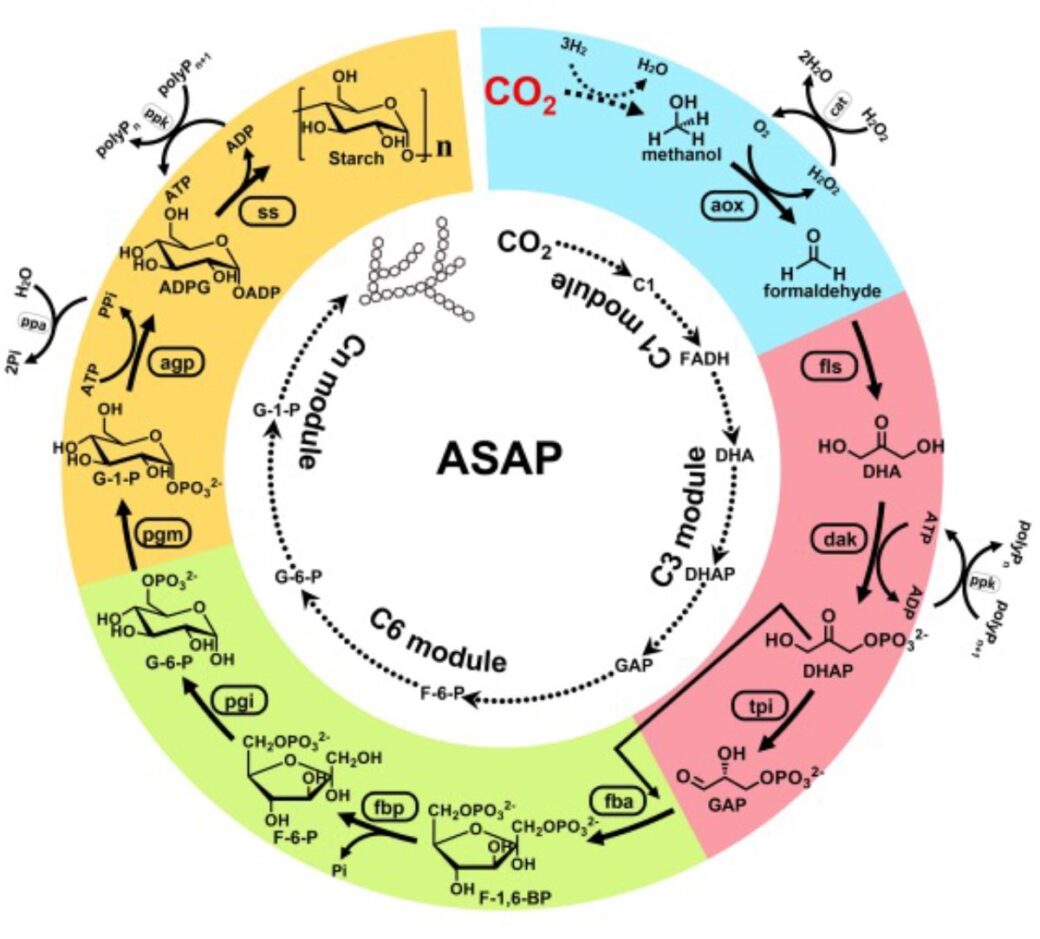Fig. 1. Design and modular assembly of an artificial starch anabolic pathway. Inner circle: schematic of the artificial starch pathway drafted by computational pathway design with divided modules. C1 here indicates formic acid and methanol. Outer circle: schematic of artificial starch anabolic pathway (ASAP) 1.0, with individual modules colored. Auxiliary enzymes and chemicals are indicated. ADPG, ADP glucose; aox, alcohol oxidase; FADH, formaldehyde; F-1,6-BP, D-fructose-1,6- bisphosphate; F-6-P, D-fructose-6-phosphate; GAP, D-glyceraldehyde 3-phosphate; pgi, phosphoglucose isomerase; polyP, polyphosphate; pgm, phosphoglucomutase; ppa, pyrophosphatase; ppk, polyphosphate kinase; ss, starch synthase; tpi, triosephosphate isomerase.
Science recently published a breakthrough in the artificial starch synthesis made by the Tianjin Institute of Industrial Biology (TIB) of the Chinese Academy of Sciences (CAS). The research is the first time in the world to achieve synthesis of starch from carbon dioxide. Scientists believe it will have a revolutionary impact on future agricultural production and bio-manufacturing. The artificial starch anabolic pathway (ASAP) consists of 11 core reactions, while starch synthesis in green plants involves about 60 steps and complex regulation.
In this hybrid pathway, CO2 is first reduced to formic acid (https://dioxidematerials.com/formic-acid-electrolyzers-and-components-for-sale/ ) or methanol that serves as the candidate intermediates to bridge possible chemical catalysts and biological enzymes (Figure 1). In a chemoenzymatic system with spatial and temporal segregation, ASAP, driven by hydrogen, converts CO2 to starch at a rate of 22 nanomoles of CO2 per minute per milligram of total catalyst, an ~8.5-fold higher rate than starch synthesis in maize. The theoretical energy efficiency is 7%, which is comparable to the theoretical photosynthetic efficiency of solar energy to biomass for C3 (4.6%) and C4 (6%) plants and is 3.5-fold of the estimated theoretical solar-to-starch efficiency for plants (2%) in a natural environment. This approach opens the way toward future chemo-biohybrid starch synthesis from CO2. (https://science.org/doi/10.1126/science.abh4049)


